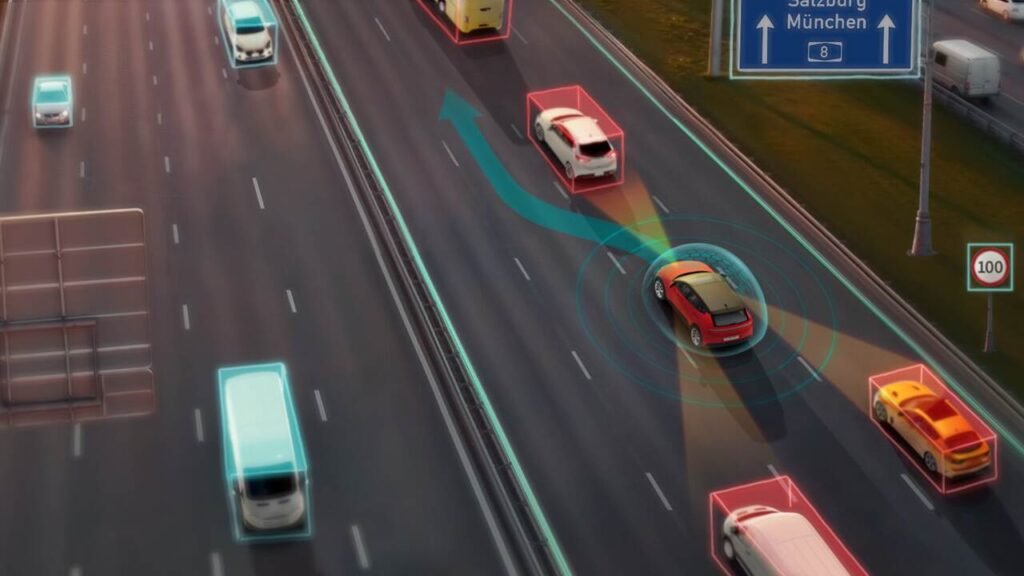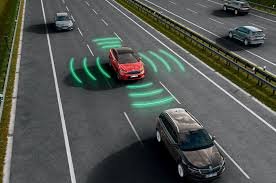As cars evolve into smart machines on wheels, safety is no longer limited to airbags and seatbelts. In 2025, advanced safety technologies are becoming standard, not just in luxury vehicles but increasingly in mid-range and even entry-level models. With road traffic getting denser and distractions rising, automated safety systems are proving to be essential for both driver and pedestrian protection.

Let’s take a closer look at three of the most impactful safety technologies transforming the modern driving experience: Automatic Emergency Braking (AEB), Blind-Spot Monitoring (BSM), and 360° Surround View Camera Systems.
1. Automatic Emergency Braking (AEB): A Life-Saving Response System
Automatic Emergency Braking is one of the most impactful safety features introduced in modern vehicles. Using a combination of radar, LiDAR, and camera sensors, the system continuously monitors the road ahead. If it detects an imminent collision and the driver does not react in time, the car automatically applies the brakes to either reduce the impact or avoid the collision altogether.
This system works not only for vehicles but also detects pedestrians and cyclists, especially useful in urban environments and school zones. By 2025, many countries are moving toward mandatory AEB systems for all new cars, thanks to their proven ability to reduce rear-end crashes by up to 50%.
2. Blind-Spot Monitoring (BSM): Your Invisible Co-Driver
Blind spots have always been one of the biggest risk areas while driving—especially on highways. Blind-Spot Monitoring systems use radar sensors placed in the rear bumper to detect vehicles in the driver’s blind spots. When a vehicle is detected in these zones, the system alerts the driver via lights or sounds, typically in the side mirrors or A-pillars.
Some advanced BSM systems even prevent unsafe lane changes by triggering lane-keeping assistance or light steering corrections. In 2025, this technology is being widely adopted in SUVs and hatchbacks, not just in high-end sedans. It significantly reduces the risk of side-swipe collisions, especially for new or elderly drivers who may not always check blind spots properly.
3. 360° Camera Systems: Eyes Around the Vehicle
Parking in tight spaces or maneuvering through crowded areas has never been easier thanks to 360-degree camera systems. These use multiple cameras positioned around the vehicle—typically in the grille, side mirrors, and rear—to stitch together a bird’s-eye view on the infotainment screen.
Drivers can see a real-time, top-down view of their car and its surroundings, which helps in avoiding curbs, pedestrians, and even small animals. This system has moved from luxury SUVs into mainstream models, especially in cars marketed for city driving. Many 360° systems also integrate dynamic guidelines to help steer into parking spots, making them a favorite among first-time drivers.
Why These Techs Matter More Than Ever
India alone records over 1.5 lakh road fatalities annually, and the numbers are similar in other emerging markets. As vehicles become faster and roads more crowded, reactive driving is no longer enough. These proactive technologies not only make driving easier but also actively prevent accidents, reducing the burden on emergency services and insurance providers.
Moreover, advanced safety systems are now often tied into car insurance discounts, making them a smart financial decision as well.
Final Thoughts: Safety is the New Luxury
In 2025, advanced safety technology is no longer optional—it’s expected. Consumers are now demanding vehicles that do more than just move from A to B. They want cars that protect, assist, and think ahead. Whether you’re buying a compact hatchback, a family SUV, or a luxury sedan, make safety features a top priority.
After all, what’s more luxurious than peace of mind on every drive?













